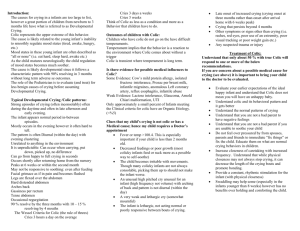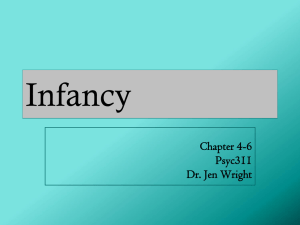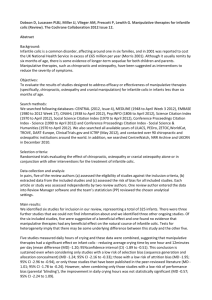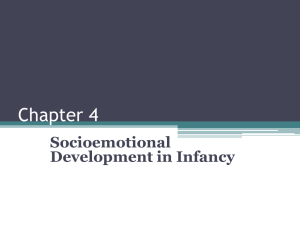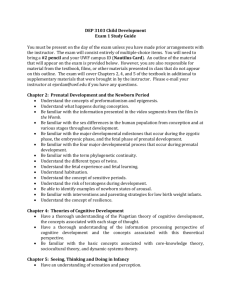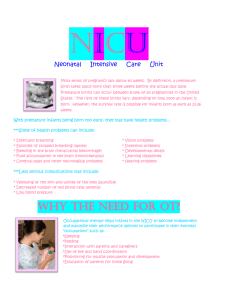Journal Entry – Infancy
advertisement
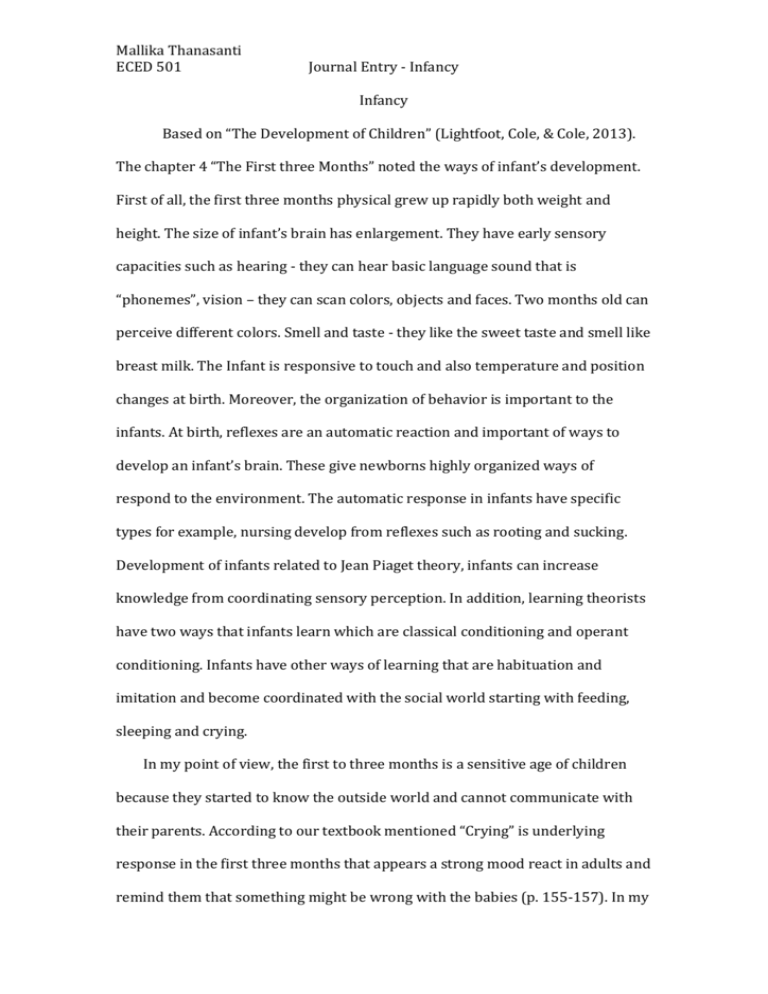
Mallika Thanasanti ECED 501 Journal Entry - Infancy Infancy Based on “The Development of Children” (Lightfoot, Cole, & Cole, 2013). The chapter 4 “The First three Months” noted the ways of infant’s development. First of all, the first three months physical grew up rapidly both weight and height. The size of infant’s brain has enlargement. They have early sensory capacities such as hearing - they can hear basic language sound that is “phonemes”, vision – they can scan colors, objects and faces. Two months old can perceive different colors. Smell and taste - they like the sweet taste and smell like breast milk. The Infant is responsive to touch and also temperature and position changes at birth. Moreover, the organization of behavior is important to the infants. At birth, reflexes are an automatic reaction and important of ways to develop an infant’s brain. These give newborns highly organized ways of respond to the environment. The automatic response in infants have specific types for example, nursing develop from reflexes such as rooting and sucking. Development of infants related to Jean Piaget theory, infants can increase knowledge from coordinating sensory perception. In addition, learning theorists have two ways that infants learn which are classical conditioning and operant conditioning. Infants have other ways of learning that are habituation and imitation and become coordinated with the social world starting with feeding, sleeping and crying. In my point of view, the first to three months is a sensitive age of children because they started to know the outside world and cannot communicate with their parents. According to our textbook mentioned “Crying” is underlying response in the first three months that appears a strong mood react in adults and remind them that something might be wrong with the babies (p. 155-157). In my Mallika Thanasanti ECED 501 Journal Entry - Infancy personal experience, my mother told me when I was two months old; I cried every day and started crying at the same time at two AM for five days. She took care of me alone because my father worked in the rural city. She did everything to stop me from crying, but it did not work. This was a hard time for my mother. According to Buddhist belief, she decided to pray and incense Buddha for me to dispel the bad mood away from me. Fortunately, that did work and I stopped crying. However, when I grew up, I just realized that my symptom in babyhood was colic. According to “What causes Colic?” (2014), referred about colic is not disease and have some key facts. For example, if the baby is not feeding well or does not have a strong sucking, it will have a colic symptom. The author gave a great suggestion for parents who are anxious with their colicky babies such as walking with them or sit in a rocking chair, trying various positions or playing music. To sum up, the first three months is relevant ages. They have physical growth and development of the brain. Babies have adjustment themselves in their new world. Parents should take care and pay attention closely and generate a good emotion and environment from their babies as well. References Lightfoot, Cole, Cole. (2005). Infancy. The Development of Children. (7th Ed). New York, NY: Worth Publishers What causes Colic? (2014, 10). Your Colicky Baby. Retrieved from http://kidshealth.org/parent/growth/growing/colic.html Mallika Thanasanti ECED 501 Journal Entry - Infancy
